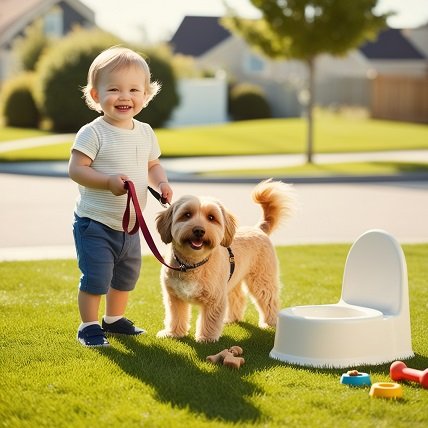Introduction
For pet owners, dog aggressiveness can be a difficult and upsetting problem. Aggression, whether it is towards humans, dog aggression training, or objects, is frequently the result of underlying behavioural problems, phobias, or worries. Fortunately, you can control and greatly enhance your dog’s aggressive behavior if you use the appropriate methods and strategies. This blog post will discuss practical methods for teaching dogs to be aggressive, giving you a thorough overview on how to establish a calm environment for you and your dog.
Understanding Dog Aggression
Prior to going into training methods, it’s critical to comprehend what behaviours qualify as dog aggression. dog aggression training who are aggressive may snarl, snap, bite, or lunge, among other behaviours. It frequently happens in reaction to unease or imagined danger. Typical forms of hostility include:
Fear Aggression: Occurs when a dog is afraid of a person, animal, or circumstance.
When a dog senses that its status is being challenged, dominance aggression develops.
Territorial aggression is when a dog attacks someone who enters its area of territory.
When a dog is stimulated yet unable to reach the intended target of its hostility, it results in redirected aggression.
Identifying the Root Cause of Aggression
Finding the source of hostility is essential to dealing with it successfully. Keep an eye on your dog’s actions to identify triggers and trends. Typical reasons include:
Lack of Socialisation: Fear or confusion may cause dogs that haven’t been exposed to a variety of situations to behave violently.
Past Trauma: Aggressive responses may result from maltreatment or unfavourable events in the past.
Medical Concerns: A dog may become agitated or hostile due to pain or suffering from medical issues.
Safety First: Managing Aggressive Behavior
Make sure that all participants are safe before beginning the program. Make use of instruments like:
Muzzles: During training sessions, bites can be avoided using a humane muzzle. To avoid worry, make sure it’s fitted correctly and used gradually.
Harnesses and Leashes: During training sessions, use a strong leash and harness to restrict your dog’s movements.
Safe Spaces: Establish a secure space where your dog can hide out and feel comfortable.
Positive Reinforcement Training
Among the best strategies for changing violent behaviour is positive reinforcement. With this method, your dog will receive rewards for good behaviour instead of punishment for bad ones. Important elements consist of:
Reward peaceful and non-aggressive behaviour with high-value treats and heartfelt praise.
Clicker training: Using a clicker to precisely mark desired behaviour will assist your dog learn what behaviours are rewarded.
To prevent confusing your dog, stay consistent in using the same orders and rewards for every member of the family.
Desensitization and Counter-Conditioning
The methods of desensitisation and counter-conditioning are employed to modify your dog’s emotional reaction to stimuli.
Desensitisation: Start out by exposing your dog to the trigger gradually at a low level and increase exposure as long as they stay quiet.
Counter-Conditioning: To transform your dog’s emotional reaction from one of negativity to positivity, dog aggression training with something enjoyable, such play or rewards.
Obedience Training: Building a Foundation
Effective obedience training establishes the foundation for managing aggression. Sit, remain, and leave-it commands, among others, aid in gaining control and fostering a good rapport with your dog. One type of obedience training is:
Basic instructions: To increase your dog’s responsiveness, start with the most basic of instructions.
Impulse Control: Instill directives such as “wait” and “stay” that help with impulse control.
Training with a leash: Make sure your dog walks nicely while wearing one to lessen the chance of hostile reactions.
Seeking Professional Help
Professional involvement might be required in some situations. Speak with a behaviourist or qualified dog trainer with expertise in handling aggressive dogs. They are able to offer:
Personalised Evaluation: A professional can evaluate your dog’s conduct and design a training regimen specifically for him.
Techniques for Behaviour Modification: Experts are versed in a range of approaches to deal with particular forms of aggressiveness.
Support and Advice: Constant assistance can guarantee that your training initiatives are successful.
Conclusion
Training a dog that exhibits aggression demands time, effort, and a comprehensive strategy. You may greatly enhance your dog aggression training and establish a peaceful home by learning the underlying causes of aggression, applying positive reinforcement strategies, and getting professional assistance when necessary. Recall that conquering aggression is a process, and that each little step you take is a step in the right direction.
FAQ
How long does aggression training take to show results?
The degree of aggression, your dog’s disposition, and the regularity of training can all affect how quickly you observe gains. While some dogs may improve in a matter of weeks, others can need several months of committed training.
Is it possible to dog aggression training at home, or do I need to hire a professional?
While some aggressiveness problems can be handled at home with the right methods and perseverance, in severe cases, seeking professional assistance is frequently advised. A licensed behaviourist or trainer can offer professional advice and create a training schedule specifically designed for your dog.
Which breeds are more likely to be aggressive?
Although aggression is not breed-specific, certain breeds may naturally display more assertive or protective behaviours. However, dog aggression training—regardless of breed—can learn to control and overcome aggressive tendencies with the right training and socialisation.

